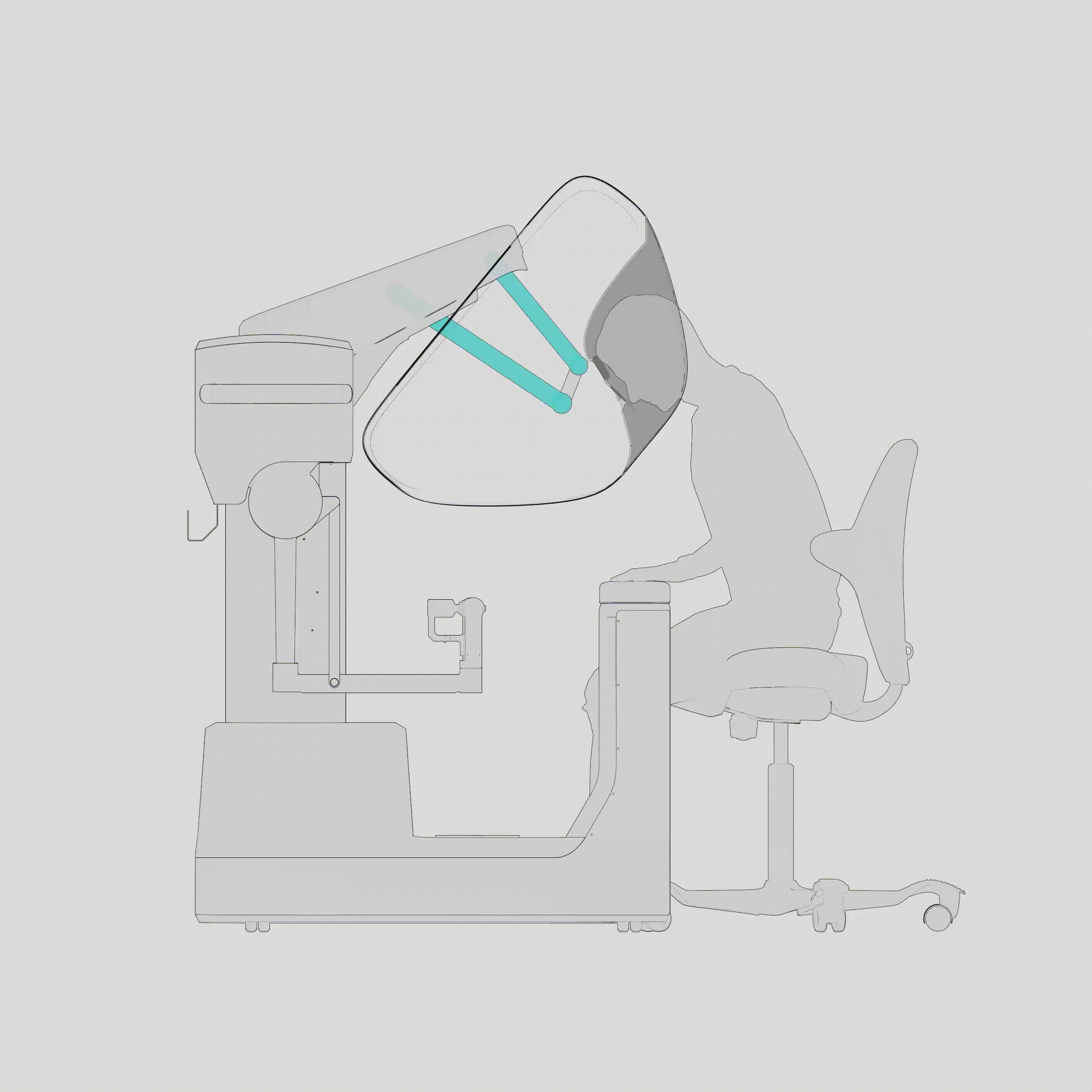
The surgical system consists of three devices: the Patient Side Robot, the Surgeon Console, and the Vision Cart. The system employs a proportional scaling mechanism to translate a surgeon's movements into highly precise micro-manipulations. During laparoscopic surgery, this technology enables surgeons to perform minimally invasive procedures with greater accuracy, reducing patient trauma and improving postoperative recovery.


The surgical robot features four robotic arms that synchronize in real-time with the surgeon's hand movements. One arm is equipped with an endoscope at its end that inserts into the patient's body cavity to transmit images back to the surgeon's console. Other arms are equipped with surgical instruments that synchronize with the surgeon's hand movements, allowing for actions such as cutting, dissecting, and suturing.

To alleviate the anxiety that patients naturally feel about being operated on by complex machinery, we have decided to employ soft, rounded visual language in the design of every component.



To prepare for surgery, medical staff can accurately align the the patient side robot with the operating table by gently pushing the control handle in the intended direction.

The design of visually clear buttons, easy-to-use unlocking mechanisms and informative indicators minimize the risk of accidental operation, streamlining the surgical workflow for medical staff.

Before surgery, medical staff will sterilize the surgical area and install a sterile drape over the patient side robot to protect both the patient and the equipment from contamination. We have designed magnetic attachment points on the robot to ensure a secure fit and prevent the drape from displacing during surgery.

After the nurse positions the patient side robot, they can easily adjust the robotic arms by pressing the unlocking buttons located on the top and bottom of the insertion arm. At the same time, visual and auditory cues, such as indicator lights and sounds, provide real-time feedback to the nurse.

Surgical instruments are designed with rounded edges for optimal handling, making installation easier for the nurse during the procedure.



To ensure nurses have clear visibility of the robotic arm's status from any position, indicator lights are strategically placed at various locations on each robotic arm.


The VCT is equipped with a touchscreen which provides real-time endoscopic images, equipment settings, and status to aid staff members in supporting the surgeon's operations.

Once the equipment is in place and the patient is under anesthesia. Vital signs will be continuously monitored throughout the procedure.


The Surgeon Console is the operating platform used by the surgeon during operation. The surgeon can view real-time 3D images of the patient's body cavity through the Viewer. Below the Viewer are two seven-degree-of-freedom gimbals used to capture hand movements. The surgeon can perform actions as if they were holding real surgical instruments but using a gripper with elbows resting on armrests. The console also has a set of foot pedals to switch modes, change instruments, adjust the endoscope angle, and trigger the functions of surgical instruments.






To minimize discomfort and optimize user experience, we have designed the face mask to be as smooth and rounded as possible while still meeting the requirements for facial ergonomics and optical clearance. The area close to the face is finished in matte black to reduce reflections and improve visual clarity. The swappable silicone pad added to the forehead can evenly distribute pressure and enhance comfort.

We have added indicator lights to the corner of the viewer to indicate the surgeon's operating status. This angled placement allows nurses to easily view the surgeon's status from various angles, enhancing the communication efficiency.

Recognizing the demanding nature of surgical work, we have prioritized ergonomics in the design of the console. Through rigorous ergonomic studies, we have fine-tuned every adjustable feature to provide maximum comfort and support for surgeons.


We have designed a four-bar linkage mechanism that allows the viewer to compensate for depth and height changes as it rotates, ensuring its movement following the surgeon's upper body movement. This mechanism creates a more natural and effortless adjustment experience.


The system will automatically configure the different parts of the console to the surgeon's personalized settings upon login, streamlining the setup process. Surgeons can also make fine adjustments using the control panel.




In addition to the industrial design of Sentire surgical robot, we also designed a new logo for Cornerstone Robotics.



Selection of visual mockups (not for final product implementation)


Following four years of rigorous clinical trials involving over 100 patients, Cornerstone Robotics' first-generation laparoscopic surgical robot has obtained NMPA approval and is now set to be launched globally. With compelling clinical evidence supporting its ability to excel in intricate procedures within confined spaces, solidifying Cornerstone Robotics growing role in the laparoscopic surgery robot market.

3d printed and painted prototype for testing the ergonomics of the patient cart robot arm



